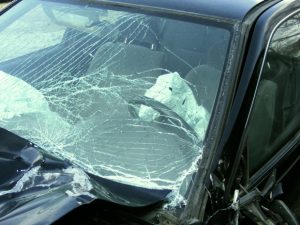A recent 5-vehicle collision on McGregor Boulevard sent three people to the hospital, highlighting the risks of Southwest Florida’s ever-increasing congestion as we approach the start of tourist season. 
NBC-2 reported three people were taken to the hospital by the Iona McGregor Fire Department after the multi-car collision occurred in the northbound lanes at A&W Bulb Road. Our car accident lawyers in Fort Myers know these types of collisions can make for complicated injury claims and may even limit your ability to collect damages from at-fault parties in cases where multiple victims are seriously injured.
We have spoken often about Florida’s low mandatory insurance minimums, which require just $10,000 in PIP coverage and $10,000 in property damage. A driver carrying these minimums will not have bodily injury liability coverage to compensate even one victim hurt in a collision, let alone multiple victims. Unfortunately, such crashes have grown increasingly common in Southwest Florida as traffic congestion backs up cars through multiple intersections on busy roads like Cleveland Avenue, Colonial Boulevard, and McGregor Boulevard.
Unpacking the Pile-up
Determining liability in a car accident isn’t always a simple task. In some cases, law enforcement will not cite a motorist even when obvious fault exists. Additionally, insurance carriers will make their own determination of fault, which may or may not agree with law enforcement findings at the scene. Many motorists are surprised to learn that insurance adjusters may find fault where law enforcement does not, or may even contradict the findings of the responding officer. Just because a driver is found to be at fault at the scene does not mean fault has been determined. This is another reason why seeking early consultation with an experienced Fort Myers car accident attorney is the best thing you can do to protect your rights.
When a chain-reaction collision at a traffic light occurs, the rear driver will most often be found at some degree of fault. Rear-end collisions remain one of the few unambiguous scenarios when it comes to liability. However, what about the middle driver or drivers? In most cases, insurance companies will rely on what is known as the “double-tap” rule. If a middle or forward driver feels a single contact, the driver of the rearmost vehicle will be found at fault for damages to the vehicles in front of it, even if the damage did not result from direct contact with the at-fault vehicle. However, if more than one impact is felt, it is assumed that the vehicle was struck in the rear by the driver immediately aft, which was then struck by another vehicle and pushed into the first car a second time. In this scenario, fault may be assigned to more than one vehicle.
Proper determination of fault is critical in these cases because even when a driver is carrying adequate bodily injury coverage of $50,000 per person/$100,000 per accident, injuries to multiple people may easily exhaust such limits. Early consultation with an experienced law firm is vital when it comes to thoroughly reviewing all causes of an accident, identifying all parties responsible, and pursuing a claim against all available insurance policies. Timely pursuit of your claim may also impact your ability to collect damages in cases where multiple victims are seeking compensation.
If you or a loved one is hurt, call Associates and Bruce L. Scheiner, Attorneys for the Injured, at 1-800-646-1210.
 Florida Injury Lawyer Blog
Florida Injury Lawyer Blog





